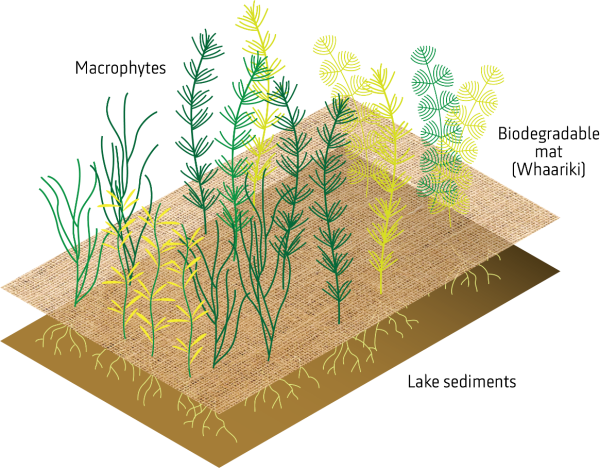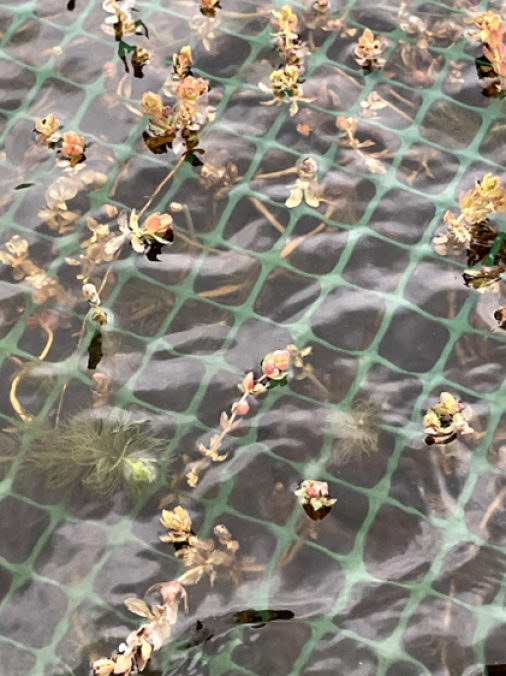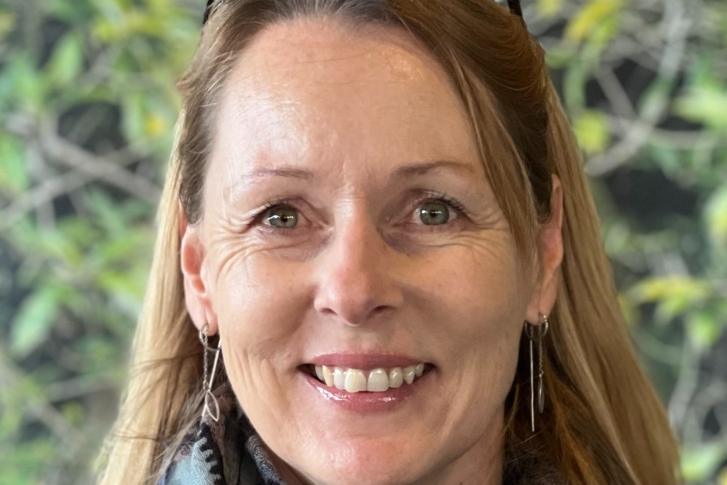Many of Aotearoa’s shallow lakes are in poor condition, with permanently turbid water meaning aquatic plants no longer have sufficient light to grow. Without the plants, wave action resuspends lake-bed sediments, and a feedback loop is created that traps the lake in the degraded state, with poor water quality.
The plant mats are referred to as ‘roto turf’ by the scientists (roto is Te Reo for lake and turf refers to dense aquatic vegetation). The project is a Smart Idea funded by the Ministry of Business, Innovation and Employment (MBIE).
“Action is required on multiple fronts to reverse this process including catchment management to reduce sediment and nutrient from flowing into lakes; and the removal of bottom-feeding pest fish to allow native fish and vegetation to return.
“However, one of the issues is when native aquatic plants have been lost from a lake for a long time, the seedbank may not be healthy enough for plants to easily re-establish even when these actions are taken. That’s where our research with mats acting as life rafts can help.”
Project Lead, Deborah Hofstra
What does the research involve?
The research looks at whether biodegradable mats could be used to grow a range of native plants including milfoil, pondweed, charophyte, and isoetes as well as propagule types (shoots, seeds, oospores), and then be installed in lakes, to accelerate plant re-establishment.
Native plant mats could also be used in constructed waterbodies (e.g., reservoirs).
Different types of matting have been trialled including products made from hessian, coconut fibre, muka (flax), and wool, and using different plant densities.
Based on the trial results, a milfoil (Myriophyllum triphyllum) and a pondweed (Potamogeton ochreatus) were then cultivated in outdoor tanks on matting made from two different products in preparation for a field study.
One matting product was made from wool, and the other from muka fibre (flax) matting.
Both products had been assessed as having good longevity in earlier tests, so we could be sure that they would remain intact during the months of cultivation, breaking down once the plants were transferred for the lake trial.
The team are also examining the characteristics of different native plants to better understand which species are more amenable to use in RotoTurf (for example based on their growth rates) and what the type and scale of benefits are that different species may confer to the plant community and lake restoration.
The beneficiaries of our research include water managers, kaitiaki, the public and conservation agencies that support the restoration of native freshwater biodiversity.
Project tools & resources
RotoTurf: Grower's Guide

RotoTurf: A guide to growing and translocating aquatic plant mats for restoration of freshwater environments
A grower's guide using the RotoTurf mat approach for environmental rehabilitation initiatives in freshwaters.
Note: There will be a second Decision Support Guide on the feasibility of macrophyte introductions and species-specific information in December 2024.
Project updates & outputs
Project update
Freshwater Update March 2024 - Native aquatic plants life rafts for our lakes
Project outputs
Woodward and Hofstra (2022). Rhizosphere metabolism and its effect on phosphorus pools in the root zone of a submerged macrophyte, Isoetes kirkii. Science of the Total Environment, https://doi.org/10.1016/j.scitotenv.2021.1
Woodward and Hofstra (2024). Submerged macrophyte root oxygen release reduces sediment oxygen demand: a positive feedback loop. Aquatic Botany, https://doi.org/10.1016/j.aquabot.2024.1
Hofstra, D., de Winton, M., Champion, P. 2024. Knowledge of macrophyte requirements and tolerances holds the key to successful shallow lake restoration – a New Zealand perspective. Marine and Freshwater Research, https://doi.org/10.1071/MF23194
Project team & collaborators
Contributors: Dr Deborah Hofstra, Mary de Winton, Dr Ben Woodward (NIWA)
Collaborators: Dr Lyn Gettys (University of Florida), Tawera Nikau (Matahuru Marae), Aareka Hopkins (AM2 & Associates)
Technical Team: Denise Rendle, Marieke van Kooten, Owen Trolove, Barry Greenfield, Valerio Montemezzani, Yeri Shim, Inigo Zabarte-Maeztu, Svenja David (NIWA)
Students/Interns: Giorgia Kershaw (University of Waikato), Natalie Taufa and Penny Hotene (Te Kūwaha interns), Juliette Coadic (University of Lille, France)
Funding - MBIE Smart Idea contract no. C01X2110
Co-funding - Waikato Regional Council
Tools & resources
-

RotoTurf Macrophyte Species Selector
Software Tool/ResourceA tool to select aquatic plant species that will support restoration of degraded freshwater. -

RotoTurf Suitability Decision Tool
Software Tool/ResourceA tool to support decision-making on the suitability of RotoTurf for your waterbody











